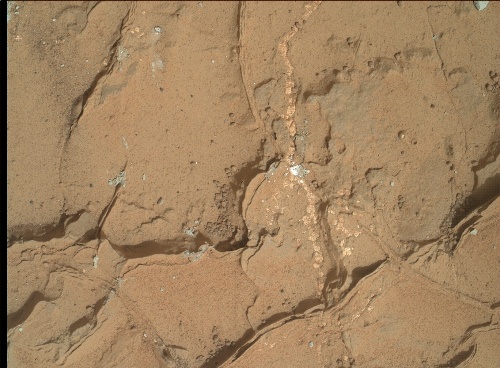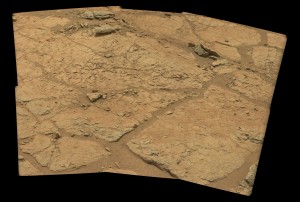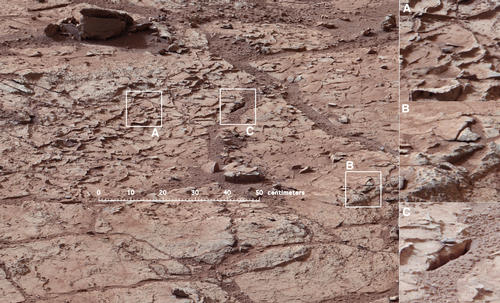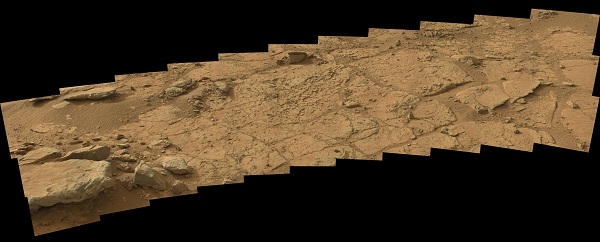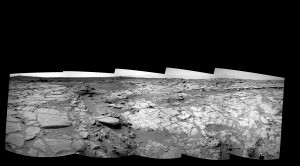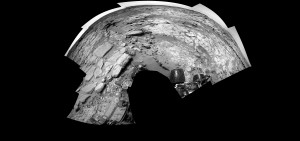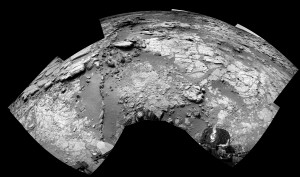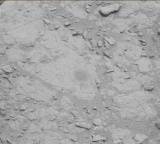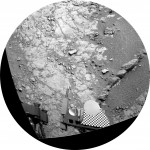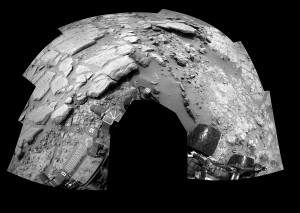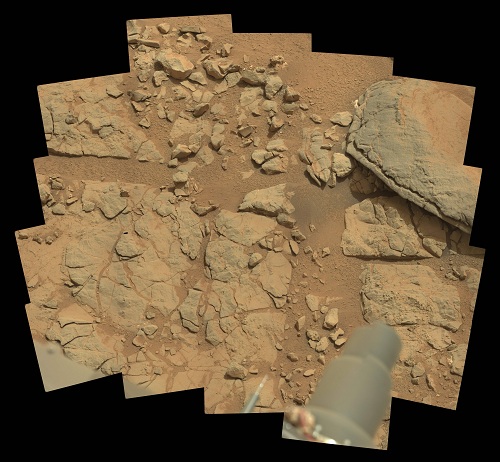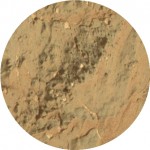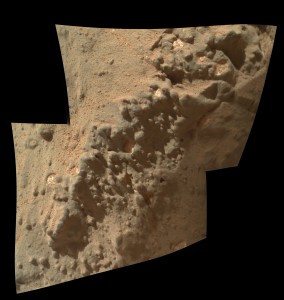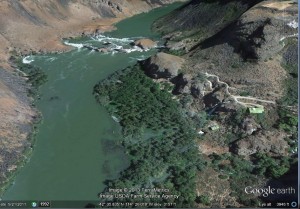I commented in my Snake River post that Curiosity was sitting right on top of the signature rock formation, but now they’ve gone and done it. From these before and after Navcam images you can see that Curiosity backed over it and knocked over, or broke off, a prominent piece.
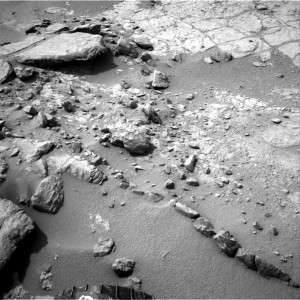
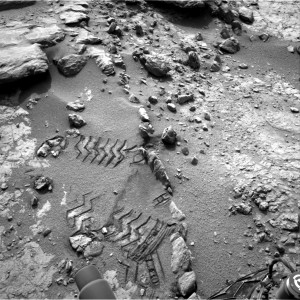 The description of the formation in the 01.04.2013 Status Report says that it “transects” the flat rocks that form the level surface, and the way I read it, thay are saying that they are actually jutting up through them.
The description of the formation in the 01.04.2013 Status Report says that it “transects” the flat rocks that form the level surface, and the way I read it, thay are saying that they are actually jutting up through them.
Seeing the way it is dislodged, though, it looks like it was just sitting there. If it broke off, I can’t discern the base where it was attached. Well, just a lot of questions, and I hope they at least get some more images of this situation with the Mastcam.
Update: Aha!
The breakage is on the side of the rock! The image below shows the corresponding parts of the whole and separated rock. Very Curious!
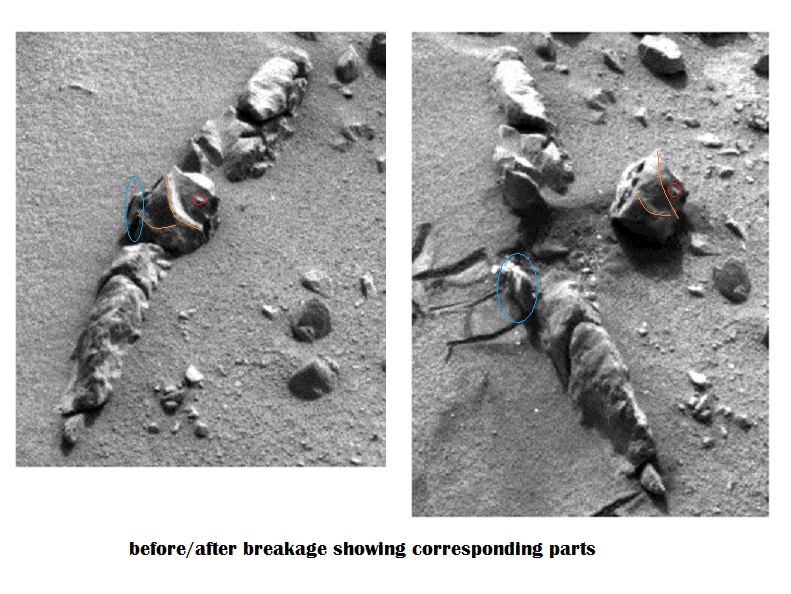
Update 2 : More from the scene of the crime:
I had just finished doing this crude comparison of b/a in the lower left corner, showing the appearance of a new rock, circled in red:

… and I was just going to say that it matched this sol 160 MAHLI thumbnail: ( update: click for large view, showing that the white material is not cleavage, but an exposed vein or layer. Cleavage of the dark material can be seen on the lower edge. )
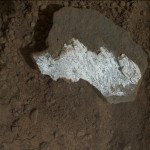
… when some sol 159 Mastcam images came through including this one:
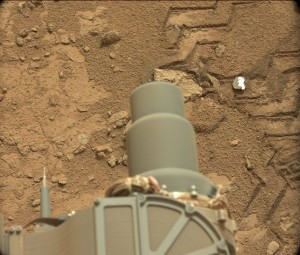
… so there it is! Then the question is where did it come from? It must have popped off the side of the large rock when it was toppled, and flipped over to this location, is all I can figure. I can only assume that the team will provide us with images of the main conflagration in due course.
Some theorizing: Referring to the tracks and the final placement of the rocks in the full scale “after” navcam image, above, it looks like the right front wheel rode up on the displaced rock as it turned right, backing toward the camera, along the line of rocks. It pushed the rock to the right with the edge of the wheel while trapping the vertical piece with downward pressure, popping it off to the side while driving the vertical piece back towards the camera, wedged against the adjacent rock. Note it is displaced that way, however it happened. To me, this shows that the rock was loose on the surface, and not anchored to anything deeper. ( It would be quite a puzzle for one edge of the rock to be anchored. ) The wheel rode up on the adjacent long rock, as you can see a white scrape along its ridge, moving towards the camera. It “touched down” briefly, then continued along the ridge to the position where the image was made. I’m thinking the other track was made “going in”, but I can’t account for the details. Of course the mission team knows all, but they are certainly less than effusive in the descriptions they give of these activities.
Update 3 : Shocker!
( Maybe I read too much Drudge 😉 )
It appears that this was a planned act. In the Jan 18, 2013 Curiosity Rover Update ( on Youtube, ) “Snake River” is not mentioned, even though it appears prominently in the opening shot, and Justin Maki states in narration that they plan to crush some rocks with the wheels on the way over to the drill site. I had started thinking that this may have been a purposeful maneuver because of the way it turned sharply and backed down the line of the lately named “Snake River”. I had thought of the despoilment factor a long time ago, but I’m still surprised they did this to a named monument, as it were, if indeed it was planned, as it surely seems to have been at this point.
After endless wanderings around the area of the announced drill site, it appears that they’re finally doing the deed, according to this sol 170 Navcam image, which shows the drill in position. That “telephone dial” is the opposite end of the drill axis, so the business end is at the surface. This is the first image I’ve seen showing this deployment.


